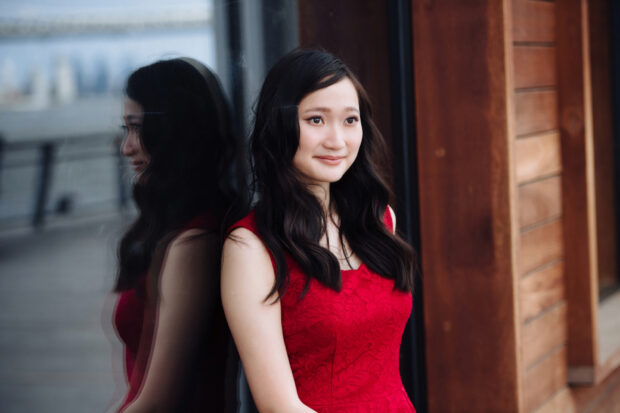Set Pieces
National Piano & Violin Competition participants in the Artist and Senior categories are required to perform a set piece in the semi-finals. This is in addition to their full solo programme and concertos. The piece is always written by a local composer. For the 2025 edition, the composer is Koh Cheng Jin

Koh Cheng Jin, composer
Writing music characterized by “lyrical centers,” that “channeled spirituality” and “vehemence” (The Straits Times), Singaporean composer and yangqin, violin performer Koh Cheng Jin strives to transcend cultural boundaries with imaginative storytelling and music making. As composer, she has collaborated with Singapore Chinese Orchestra, Singapore Symphony Orchestra, American Composers Orchestra, Juilliard Orchestra, China Conservatory of Music, Central Conservatory of Music, Chinese Music Ensemble of New York, Bard US-China Music Institute, American Guild of Organists, Talea Ensemble, Verona Quartet, Ding Yi Music Company, among several others. Most significant accolades include the BMI Foundation Composer (William Schuman) Prize, an ASCAP Morton Gould Young Composer Award, the Society of New Music Brian Israel Prize, Palmer Dixon Award and Gena Raps Chamber Music Prize (both from The Juilliard School), and the Boston New Music Initiative (BNMI) Prize. She was also commissioned by the Smithsonian National Museum of Asian Art for their centennial celebrations and was the commissioned composer for the 2022 Singapore International Violin Competition. Festivals that have featured her music include the Singapore International Festival of Arts and Singapore International Piano Festival. Having completed her undergraduate (with academic honors) and graduate studies at The Juilliard School, she is currently a PhD MacCracken doctoral fellow and a graduate teaching adjunct at New York University Graduate School of Arts and Science. Her pedagogues include Melinda Wagner, Kelly Tang, Robert Beaser and Louis Karchin.
Scat singing is a vocal improvisation technique in Jazz music where the singer uses wordless syllables to create spontaneous melodies and rhythms. In spirit of such free expression, Scat for solo piano contains two main sections—one that is more of a laid-back, unrestrained character with fragments of jazz-inspired melodies that emerge and dissolve quickly, and another that is more energetic and almost fanatical with a rapid bass groove. This piece is written for Singapore's 2025 National Piano and Violin Competition, Piano (Artist Category).
Falsetto for solo violin is particularly inspired by high-pitched, xiao sang (⼩嗓/small voice) technique sung by female roles (dan) in Peking opera. The clear, penetrating timbre and speech-like, pitch-bending effects, highly characteristic of the genre, serve as the foundation of this work. A brief moment of improvisation in the music heightens the expressivity of such a unique vocal production. This piece is written for Singapore's 2025 National Piano and Violin Competition, Violin (Artist Category).
Melodie for solo piano is my musical response to the calm but deeply moving chorale-style movement "Auf einer Burg" from Schuman's Liederkreis, Op. 39. Melodie possesses a clear homophonic texture throughout with an overarching melody that gradually expands gracefully but not too emphatically or dramatically. This piece is written for Singapore's 2025 National Piano and Violin Competition, Piano (Senior Category).
Borrowing from the vocal tradition of elaborate, virtuosic ornamentation commonly associated with the Baroque period, Coloratura for solo violin mainly explores agility and precision on the violin, anchored by a pedal tone (G). As a player and deep admirer of J.S. Bach's solo violin music, I also featured some influences in this work, such as lyricism, string crossing, terraced dynamics and sequences. This piece is written for Singapore's 2025 National Piano and Violin Competition, Violin (Senior Category).